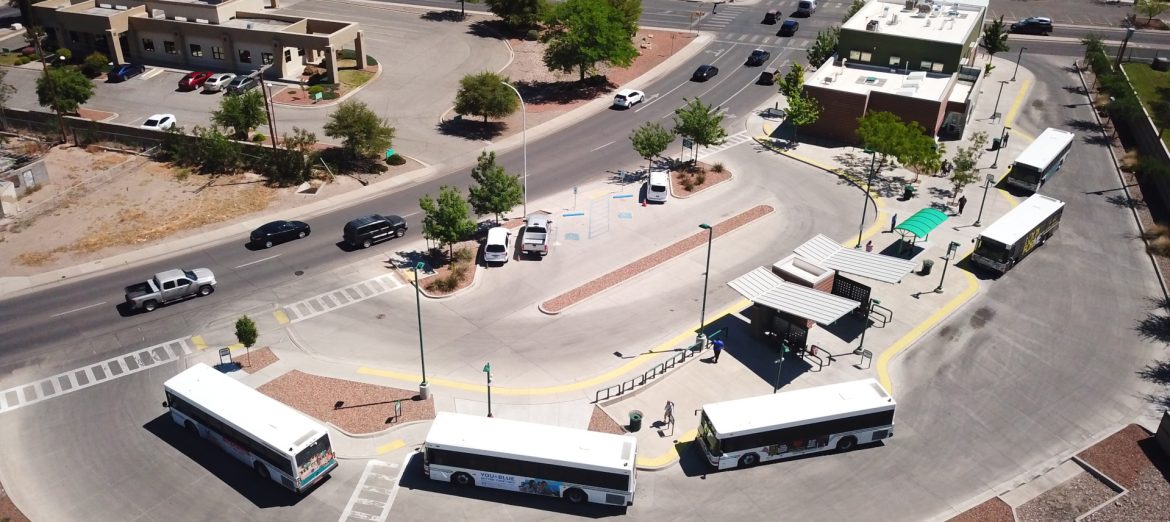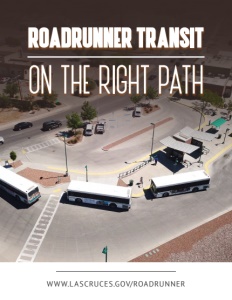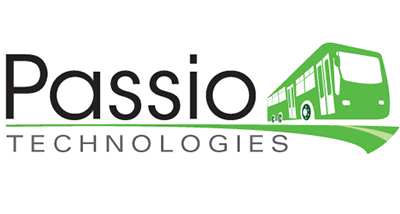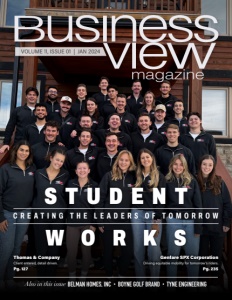RoadRUNNER Transit
On the Right Path: RoadRUNNER Transit’s Journey to a Greener Tomorrow
Shaping the future of public transportation in Las Cruces with cutting-edge technology, strategic partnerships, and a bold leap toward electrification.
RoadRUNNER Transit, serving the City of Las Cruces, New Mexico, offers a range of services designed to meet the diverse needs of its community. The service operates eight major bus routes, covering critical areas across the city. These routes include various destinations like shopping centers, employment hubs, healthcare facilities, and recreational spots, ensuring comprehensive coverage and convenience for its users.
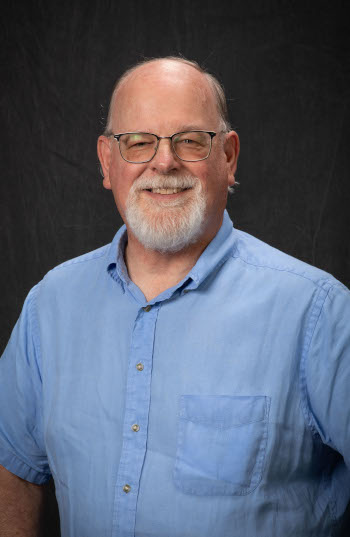
Mike Bartholomew, City Transit Director of Las Cruces
Mike Bartholomew, City Transit Director of Las Cruces, discusses the intricate workings of RoadRUNNER Transit, illuminating its journey since its inception in 1986. He elucidates, “We operate eight fixed routes year-round, utilizing a peak service fleet of 13 buses. This includes two routes specifically designed for the campus, operational only during academic semesters.”
RoadRUNNER’s commitment to accessibility is further exemplified through its paratransit service, Vamonos, which caters to individuals with disabilities and seniors aged sixty and over. Bartholomew highlights the scale of this operation, noting the availability of up to 15 Vamonos vehicles during peak times.
The fleet’s composition blends twenty fixed-route buses and twenty-one paratransit vehicles. In a leap towards sustainability, Bartholomew shares, “We recently implemented our first five 35-foot, full battery electric buses, earmarked to replace five of our older models in need of replacement.”
The operational hours of RoadRUNNER are extensive, spanning from 6:30 AM to 10:30 PM on weekdays and 8:30 AM to 4:30 PM on Saturdays, with no services on Sundays. A notable milestone in its service is adopting a zero-fare policy, marking its first anniversary, underscoring its commitment to making public transport more accessible to all.
Navigating Post-COVID Challenges and Innovations
In the wake of the COVID-19 pandemic, public transportation systems worldwide faced unprecedented challenges. RoadRUNNER Transit was no exception, as it navigated through these tumultuous times, rethinking strategies to enhance ridership and improve services.
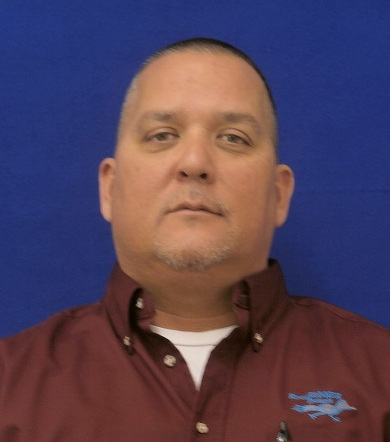
Richard Hanway, City Transit Manager
Richard Hanway, City Transit Manager, reflects on the impact of COVID-19 on RoadRUNNER’s operations. “Before COVID, we had extended our service hours till 10:30 PM on weekdays, and we observed a significant rise in ridership,” he recalls. However, the pandemic brought an abrupt halt to this growth. Hanway reveals a strategic shift to a zero-fare service during the pandemic’s decline, initially as a temporary measure. This initiative, driven by the city council’s push to support low-income residents and those returning to work, eventually transitioned into a permanent feature. “Our ridership has rebounded, matching the numbers seen during the late-night service’s initial success,” Hanway notes, indicating a successful recovery.
At the same time, Bartholomew emphasizes the importance of transportation equity, a key factor influencing the council’s push for zero fares. He highlights ongoing efforts to improve customer communication, mentioning the implementation of new software for both paratransit and fixed-route services. This technology upgrade will include user-friendly apps allowing real-time tracking and scheduling. “By the end of this calendar year, our customers will have enhanced digital interfaces at their fingertips,” asserts Bartholomew, signaling a significant leap in RoadRUNNER’s service delivery and user engagement.
Embracing Technology and Infrastructure Development
RoadRUNNER Transit is not just about connecting points A and B; it’s about embracing technology and infrastructure to enhance user experience and operational efficiency. Hanway explains the shift in technology to serve riders better.
“We moved from a web-based platform to a more intuitive, phone-based platform,” he states. This transition allows for push notifications, providing real-time updates on detours or delays directly to riders’ mobile devices. The new technology also facilitates real-time route adjustments for drivers and informs passengers about temporary bus stops due to unforeseen circumstances like construction. “These upgrades significantly enhance user experience, allowing for real-time bus tracking and estimated arrival times at stops,” Hanway adds.
A significant change brought about by the zero-fare policy is the introduction of automatic passenger counters in electric buses. “We repurposed funds from fare boxes to install these counters,” explains Hanway. This technology shift aligns with the transition to electric buses, providing more accurate passenger counts. “We’re expanding this feature to more buses, with funding already secured for additional electric vehicles,” he adds.
Speaking on infrastructure, Hanway mentions the construction of a new transit maintenance and operations facility. “This project, initiated around 2017-2018, marks a significant milestone in our journey towards modernizing RoadRUNNER Transit,” he reflects. However, the journey wasn’t without its challenges.
The switch from diesel to electric buses required renegotiating funding with the Federal Transit Administration (FTA), as electric buses are more expensive. “The cost difference meant we couldn’t acquire as many buses initially, but we have been working steadily to secure additional funding,” he elaborates. The COVID-19 pandemic further complicated matters by causing inflation and rising costs, but the team remained resilient in their pursuit of improvement.
Electrification and Innovative Facilities
RoadRUNNER Transit’s journey towards a sustainable future is marked by significant steps in electrification and the development of a new operations facility. Bartholomew discusses the long-term vision and the challenges of transitioning to a greener, more efficient public transport system.
“When I joined nearly 22 years ago, the idea of a new facility was already on the table,” he recalls. Initially, the plan did not account for electric buses, a testament to how rapidly technology and priorities have evolved in the transit sector. The pursuit of this project involved extensive planning, including securing federal grants and local funding. However, with the shift towards electric buses, the team faced the need to redesign the facility to incorporate charging infrastructure. “This adjustment not only accommodates our current fleet of battery electric buses but also sets the stage for the future expansion of our electric vehicle fleet,” Bartholomew explains.
Addressing the broader state-level focus on electrification, Bartholomew notes that while many transit agencies in New Mexico are exploring electric vehicles, there isn’t a statewide push for electrification like in some other states. He mentions the Governor’s focus on developing hydrogen fueling stations, not just for transit but also for other heavy-duty vehicles. “New Mexico doesn’t have general funding for public transit systems, which somewhat limits our ability to transition rapidly,” he observes.
Regarding the financial aspects, particularly in the context of the zero-fare policy and the potential of hydrogen or electric buses as revenue generators, Bartholomew is pragmatic. “These initiatives are more about providing what the community desires rather than being significant revenue sources,” he states. The focus remains on fulfilling community needs, understanding that such services, though essential, may not always be significant revenue contributors.
Adapting to Emerging Trends in Transportation
In an era where transportation trends are rapidly evolving, RoadRUNNER Transit is not just a passive observer but an active participant in adapting and implementing new technologies. Hanway discusses the various alternative fuel options that have been considered for RoadRUNNER’s fleet.
“While evaluating our system, we looked beyond just following trends. Our focus was on what would be most efficient and cost-effective for Las Cruces,” he explains. The team considered compressed natural gas (CNG) but ruled it out due to the prohibitive cost of infrastructure development. “Eventually, we settled on battery electric buses as our preferred choice,” Hanway notes, underscoring the decision’s practicality given the city’s context and needs.
Hanway acknowledges their advantages regarding hydrogen fuel cells but also points out the challenges, particularly the lack of local fueling stations and the higher costs compared to battery electric buses. “Our routes don’t necessitate the extended range that hydrogen fuel cells offer, making battery electric buses a more viable option for us,” he adds.
Hanway then explains the logistics of operating electric buses. “We initially considered in-route charging with overhead charge rails,” he says. However, as technology evolved, the team began exploring inductive charging due to the complexity of installing overhead charging infrastructure. He describes their strategy to use the dwell time at the intermodal center for opportunity charging. “This method will extend the battery range, allowing us to use electric buses as direct replacements for diesel ones throughout the day,” Hanway explains. This approach reflects a strategic adaptation to the unique operational dynamics of RoadRUNNER Transit, ensuring that electric buses can be as efficient and reliable as their diesel counterparts.
Forging Partnerships and Navigating Infrastructure Challenges
RoadRUNNER Transit’s journey towards electrification and sustainability is about upgrading its fleet and facilities, establishing key partnerships, and tackling infrastructure challenges. Bartholomew and Hanway discuss the integral collaborations and strategic planning shaping RoadRUNNER’s future.
Bartholomew begins by highlighting partnerships with educational institutions. “Since our inception in 1986, we’ve had a strong relationship with New Mexico State University and Dona Ana Community College,” he says. These partnerships involve providing specialized route services to these campuses, reflecting RoadRUNNER’s commitment to serving the educational community. However, he notes a gap in partnerships with medical facilities, indicating potential areas for future collaboration.
Hanway then focuses on a crucial aspect of their electrification journey: infrastructure. He recalls the initial discussions with El Paso Electric, which began around 2018-2019. “The challenge was not just about adding electric buses but also building out the necessary power infrastructure, a first in this region,” he explains. The COVID-19 pandemic added complexity to this process, particularly with supply chain issues affecting the acquisition of essential components like generators.
One innovative solution discussed by Hanway is the potential public-private partnership with El Paso Electric for battery storage. “They’ve earmarked $1.5 million specifically for our battery storage project,” he shares, emphasizing the significance of this collaboration. This partnership aims to ensure power availability during peak times, a critical component of maintaining an efficient electric bus fleet.
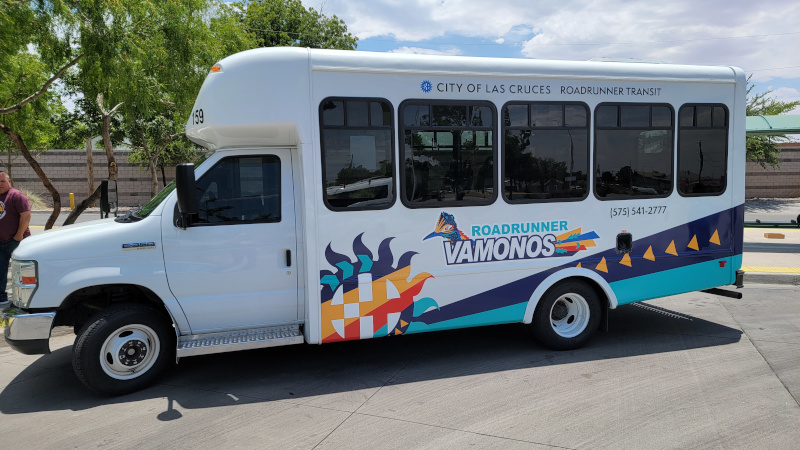
Mapping the Road Ahead
As RoadRUNNER Transit looks towards 2024, Bartholomew and Hanway outline their top priorities and plans, showcasing a blend of immediate actions and long-term vision for the transit system in Las Cruces.
Bartholomew articulates the immediate focus for 2024: integrating the new electric buses into service. “We’re collaborating with a company to study and enhance the performance of these buses,” he says. This effort underscores their commitment to ensuring the efficiency and reliability of the new fleet. Additionally, he highlights the full implementation of the latest software for paratransit and fixed route services, marking a significant upgrade in RoadRUNNER’s operational capabilities.
Looking further ahead, Bartholomew reveals plans to explore microtransit services. “While this might materialize around 2025 or 2026, it’s a part of our short-range planning,” he explains. Microtransit would serve less densely populated areas with smaller, more efficient vehicles, optimizing resource allocation and expanding service coverage.
Hanway adds depth to the microtransit concept, distinguishing it from current services. “Unlike our next-day service for ADA and senior citizens, microtransit would offer more immediate, on-demand transportation,” he shares. This shift would significantly enhance mobility and independence for these riders.
Both leaders’ insights into RoadRUNNER Transit’s priorities for 2024 and beyond reveal a forward-thinking, adaptable approach. Balancing immediate upgrades with long-term strategic planning, they underscore a commitment to efficient, sustainable, and responsive public transit for the Las Cruces community.
AT A GLANCE
RoadRUNNER Transit
What: A city-run public transportation service focusing on sustainable and technologically advanced solutions
Where: Las Cruces, New Mexico
Website: www.lascruces.gov/roadrunner
PREFERRED VENDORS
RIDE – ride.co
RIDE Provides Zero-Emission Transportation Throughout the Land of Enchantment
With experience fueled by innovation, RIDE (Real Innovation Delivered with Excellence) leads the heavy-duty electric vehicle industry with a dedication to the highest level of safety and reliability inspired by its shared mission to power the future.
RIDE is proud to partner with RoadRUNNER Transit to provide zero-emission solutions to the City of Las Cruces, New Mexico. We applaud the agency’s commitment to provide affordable, accessible and sustainable transportation to the region with fare-free service.
The five K8M RIDE transit buses are built with the industry’s safest battery. Each battery-electric bus can seat up to 32 passengers, and can be equipped with up to two ADA compliant wheelchair positions.
As a one-stop mobility solution provider with more than 1,000 vehicles on the road or in production in the United States, RIDE Mobility is creating hundreds of American jobs and making battery-electric buses that are helping clean our air.
The buses are purpose-built by members of the Sheet Metal, Air, Rail and Transportation (SMART) Workers Union, Local 105, at the BYD | RIDE Coach and Bus Facility located in Lancaster, CA.
Contact info.na@ride.co to discover more on how RIDE transit buses can innovate your transportation needs.
DWL Architects & Planners, Inc. of New Mexico – https://dwlnm.com/
At DWL|NM, we believe that architecture is not just about buildings; it’s about the people who inhabit them and the communities they shape. Our commitment to service-oriented design reflects this belief, as we consistently put the needs and aspirations of our clients and communities at the forefront of every project we undertake. Whether it’s designing a cutting-edge corporate headquarters or restoring a historic landmark, our approach remains the same: to create spaces that resonate with the people who use them.
Our work for the City of Las Cruces’ RoadRunner Transit facilities prioritizes the city’s sustainability goals. The new facilities are targeted to achieve LEED Certification by emphasizing sustainable design requirements such as: site development, water-efficiency, optimized energy performance, use of recycled materials & resources, and indoor environmental quality management. We are proud of our work to support the city’s Climate Action Plan and mission for a greener future.
As we move forward, DWL|NM remains dedicated to shaping spaces that inspire, innovate, and endure. Our humble firm prioritizes service-oriented design as the basis for every project. We invite you to join us on this journey, where architecture transcends just building and becomes a force for positive change in New Mexico.
DWL|NM: Where design meets dedication, and buildings become legacies.
